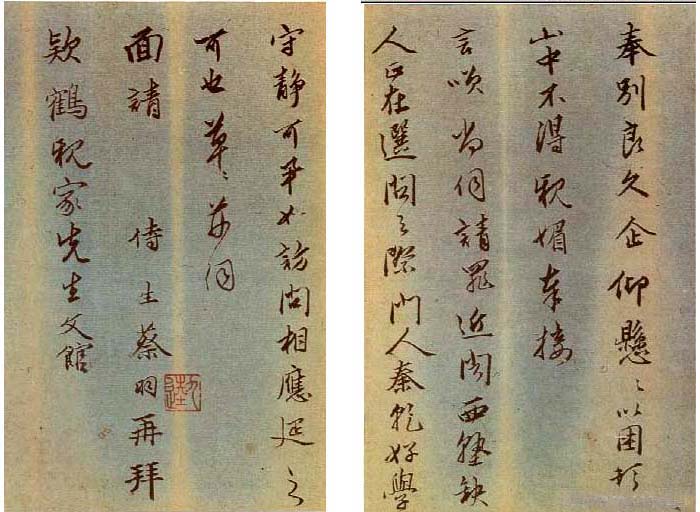Cai Yu (?-1541), named Jikui, also called himself Linwushanren, also known as Zuo Xuzi. A native of Xishan, Wuxian County, Jiangsu Province. At present, only a few of Cai Yu's handed down works have been discovered.
Cai Yu lost his father when he was young, so his mother taught him how to read. He was able to write and compose at the age of 12, and was full of miraculous energy. Cai Yu was mainly active in the Hongzhi, Zhengde, and Jiajing dynasties, and became world-famous together with Zhu Yunming, Wen Zhengming and other famous "Wumen talents". His calligraphy is particularly good at straight and running script. He wrote "with a bare pen to gain strength, and his posture is as complete as his bones." Li Rihua said that he "has a beautiful and elegant calligraphy style" and took the Jin and Tang Dynasties as a model. Wang Chong once went to Xishan to study calligraphy from him for three years and was deeply taught by him.
There are very few authentic works of Cai Yu handed down from generation to generation, so they are even more precious. As far as is known, there are "Linjie Jin Shi" in running script from the 15th year of Jiajing reign of the Ming Dynasty (1536), "Baozhu Shuojuan" in regular script from the 6th year of Zhengde reign (1511), and "Fan pages of poems about traveling to Jinling" collected in the Palace Museum in Beijing. The museum collects "On Calligraphy and French Volume" (also known as "Shu Shuo") written in the 14th year of Jiajing (1535), as well as the Shanghai Museum's collection of running script fans. Among them, "Shu Shuo" is not only a precious authentic Dharma calligraphy, but also a treatise on ancient calligraphy, mainly discussing the method of "using the brush". He proposed "break" and "connection", "empty" and "real", "disease" and "xu", "odd" and "righteous", "sparse" and "dense", "hua" and "bald" , the principles for dealing with various opposing factors that are often encountered when using the pen are full of philosophical thinking. Therefore, Lu Shihua's "Records of Calligraphy and Paintings Seen by Wu and Yue" said that "Shu Shuo" "contains the discussion of calligraphy in past dynasties, participates in each other's opinions, expresses his own opinions, discusses the truth and is comprehensive, and the sentences are ancient but the characters are strange." It is similar to Ouyang's Eight Methods ’, he passed the "Book Book" in court and became immortal."
Cai Yu's articles studied the pre-Qin and Han Dynasties, and his poems are like the "poetry ghost" Li He. He himself once said: "My poems are from the Wei and Jin Dynasties, but today they are Li Heye!" He is the author of two volumes of "Linwu" and "Nanguan". handed down from generation to generation.

"Cursive Notes" Collection of the National Palace Museum, Taipei








